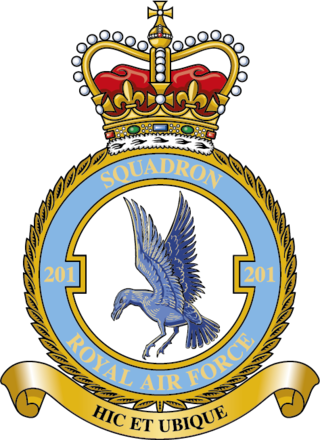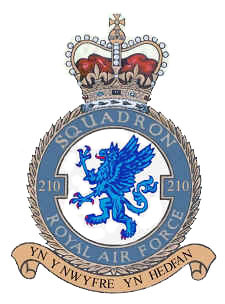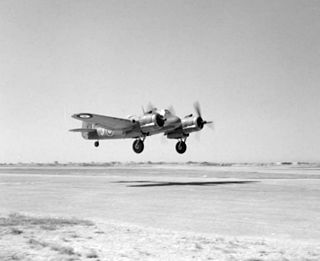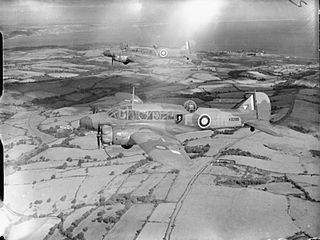
No. 206 Squadron is a Test and Evaluation Squadron of the Royal Air Force. Until 2005 it was employed in the maritime patrol role with the Nimrod MR.2 at RAF Kinloss, Moray. It was announced in December 2004 that 206 Squadron would disband on 1 April 2005, with half of its crews being redistributed to Nos. 120 and 201 Squadrons, also stationed at Kinloss. This was a part of the UK Defence Review called Delivering Security in a Changing World; the Nimrod MR.2 fleet was reduced in number from 21 to 16 as a consequence.

Number 201 Squadron is a squadron of the Royal Air Force. It currently operates the Boeing Poseidon MRA1 from RAF Lossiemouth, Moray.

No. 257 Squadron RAF was a flying squadron of the Royal Air Force active during the First World War, the Second World War and also the Cold War. It was finally disbanded in December 1963.
No. 666 Squadron was a Royal Air Force Air Observation Post (AOP) squadron associated with the Canadian 1st Army and later part of the Royal Auxiliary Air Force. Numbers 651 to 663 Squadron of the RAF were Air Observation Post units working closely with British Army units in artillery spotting and liaison. A further three of these squadrons, 664–666, were manned with Canadian personnel. Their duties and squadron numbers were transferred to the Army with the formation of the Army Air Corps on 1 September 1957
No. 282 Squadron was a Royal Air Force air-sea rescue squadron during the Second World War.
No. 191 Squadron was a Royal Air Force squadron. During World War I it was a non-operational night training unit, while during World War II it was engaged in maritime reconnaissance.

No. 190 Squadron was a Royal Air Force squadron with a relatively short existence, but a very broad career. It served as a trainer squadron during the first World War and as convoy escort, airborne support and transport squadron during World War II.
No. 265 Squadron RAF was an anti-submarine squadron of the Royal Air Force during two world wars. It was based at Gibraltar in World War One and Madagascar in World War Two.
No. 353 Squadron RAF was a Royal Air Force squadron, active during World War II carrying out maritime patrol and transport tasks.
No. 262 Squadron RAF was an anti-submarine patrol squadron of the Royal Air Force between 1942 and 1945.

No. 210 Squadron was a Royal Air Force unit established in World War I. Disbanded and reformed a number of times in the ensuing years, it operated as a fighter squadron during World War I and as a maritime patrol squadron during the Spanish Civil War, World War II and the Cold War before it was last deactivated in 1971.
No. 228 Squadron RAF was a squadron of the Royal Air Force active at various times between 1918 and 1964. It spent the greatest part of its existence flying over water, doing so in First, and Second World Wars and beyond, performing anti-submarine, reconnaissance and air-sea rescue tasks.

No. 235 Squadron RAF was an anti-submarine squadron of the Royal Air Force in World War I and in World War II served as a squadron in RAF Coastal Command.
No. 511 Squadron was a Royal Air Force transport squadron, active during World War II, the Berlin Airlift and during the sixties and early seventies. It operated, during its three periods of existence, aircraft such as the Douglas Dakota, the Avro York, the Handley Page Hastings and the Bristol Britannia.
No. 204 Squadron was a Royal Air Force unit first formed in March 1915 as No.4 Squadron Royal Naval Air Service.
No. 608 Squadron was an Auxiliary Air Force squadron of the Royal Air Force during the Second World War. It flew during its existence as a bomber, fighter and reconnaissance unit and was the only RAF squadron to be equipped with the unsuccessful Blackburn Botha torpedo bomber.

No. 321 (Dutch) Squadron RAF was a unit of the Royal Air Force during the Second World War formed from the personnel of the Marineluchtvaartdienst (MLD), the Royal Netherlands Naval Air Service.
No. 292 Squadron RAF was an air-sea rescue (ASR) squadron of the Royal Air Force operating in the Bay of Bengal during the Second World War.
No. 527 Squadron RAF was a radar calibration unit of the Royal Air Force between 1943 and 1958.
No. 240 Squadron RAF was a Royal Air Force flying boat and seaplane squadron during World War I, World War II and up to 1959. It was then reformed as a strategic missile squadron, serving thus till 1963.






